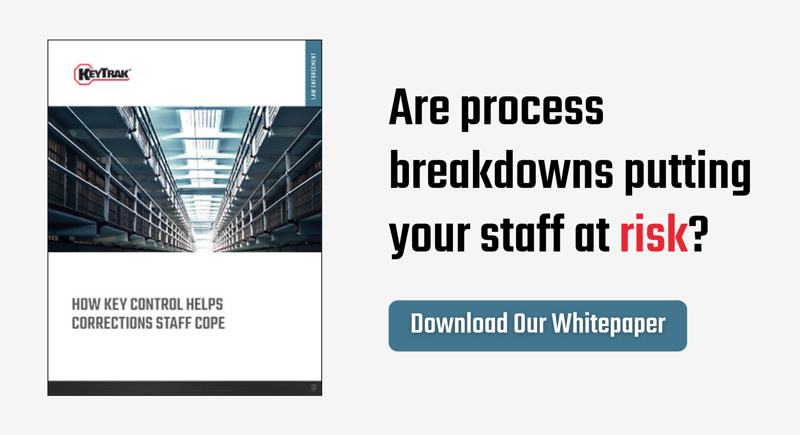Correctional facilities across the U.S. are facing unprecedented staffing shortages. Local jails, for example, hold over 664,200 inmates but employ only about 211,700 staff members. Meanwhile, the prison population has increased approximately 2% in already overcrowded, understaffed facilities. This imbalance puts enormous pressure on correctional officers (COs), who need quick, reliable access to keys in a high-stress environment.
COs must react quickly to incidents where every second counts. Delays caused by searching for keys or using outdated logs increase the risk to staff. The following practices highlight how electronic key control systems can protect staff, prevent internal theft, and ensure keys are accounted for.
Don’t Rely on Outdated Procedures
Relying on manual processes like storing keys on pegboards and using handwritten logs increases the risk of a key falling into the wrong hands, which endangers staff. For instance, in a 2023 inspection of a South Carolina jail, investigators found unsecured keys, creating the potential for inmates to access cells and exits.
If keys are lost or stolen, COs may face an increased workload, and costly lock changes may follow. To reduce this risk, an electronic system can send automatic alerts to you — or a senior officer — when keys aren’t returned, whereas with a manual log, you’d only know during an audit.
Hold Employees Accountable
The right key control system will allow you to limit which keys are available to staff members based on their job function, time of day, or even days of the week. Access levels prevent staff members from entering areas of the facility or checking out assets not required for their jobs.
While trust is important, unauthorized access has serious consequences. For instance, a New Orleans jail employee was implicated in facilitating a breakout that allowed 10 inmates to escape, putting the community at risk. This incident highlights why controlled access is critical to keeping staff — and citizens — out of potentially dangerous situations.
With an electronic system that automatically tracks key activity, you can quickly know if a key isn’t returned and who removed it, eliminating the need for manual access logs.
Avoid Slow Key Checkout Methods
Under pressure, COs may struggle to locate keys or skip logging them, which can increase the risk of accidents or security breaches. Having a quick and easy checkout method means COs won’t waste time manually signing keys out. An electronic key control system with a prompt checkout procedure, like a biometric fingerprint reader, saves time.
In this chronically understaffed profession, an efficient electronic key management process can save your facility time, money, and lives.

![Prison employees [176890273] banner Prison employees [176890273] banner](https://blog.keytrak.com/hs-fs/hubfs/Prison%20employees%20%5B176890273%5D%20banner.jpg?width=3000&height=613&name=Prison%20employees%20%5B176890273%5D%20banner.jpg)

